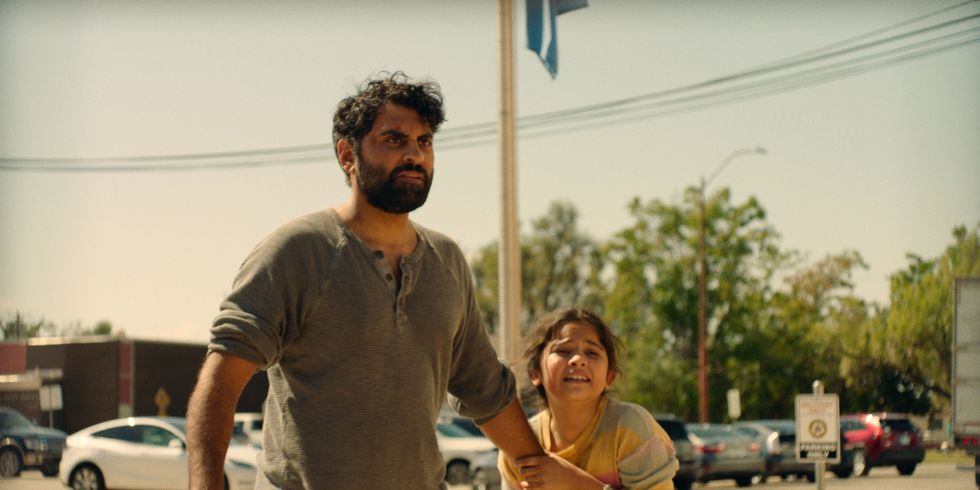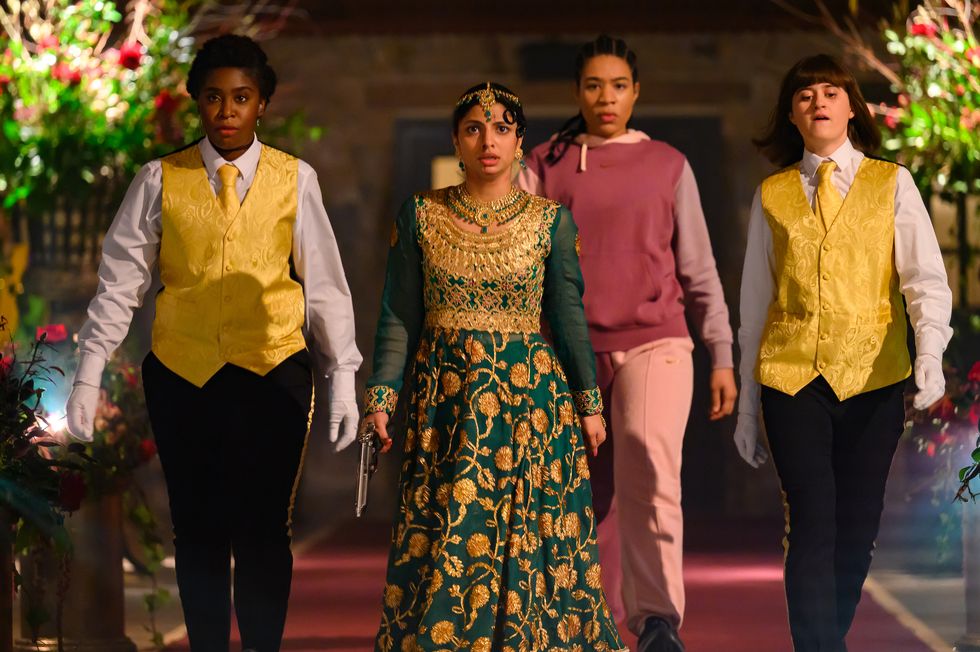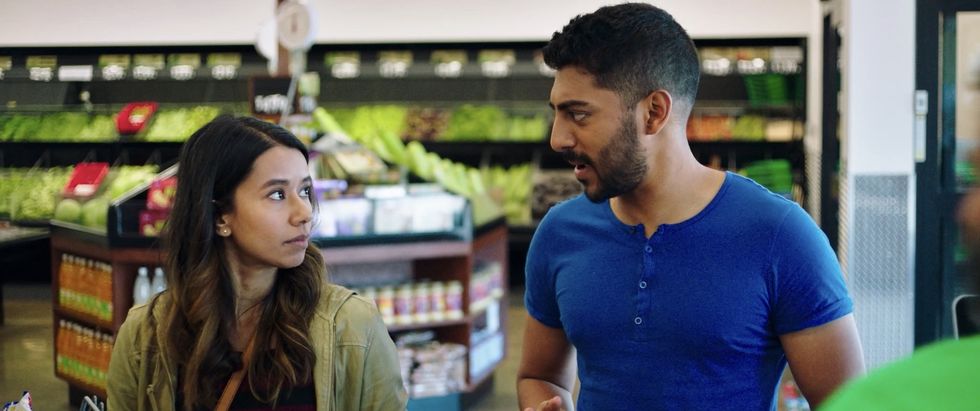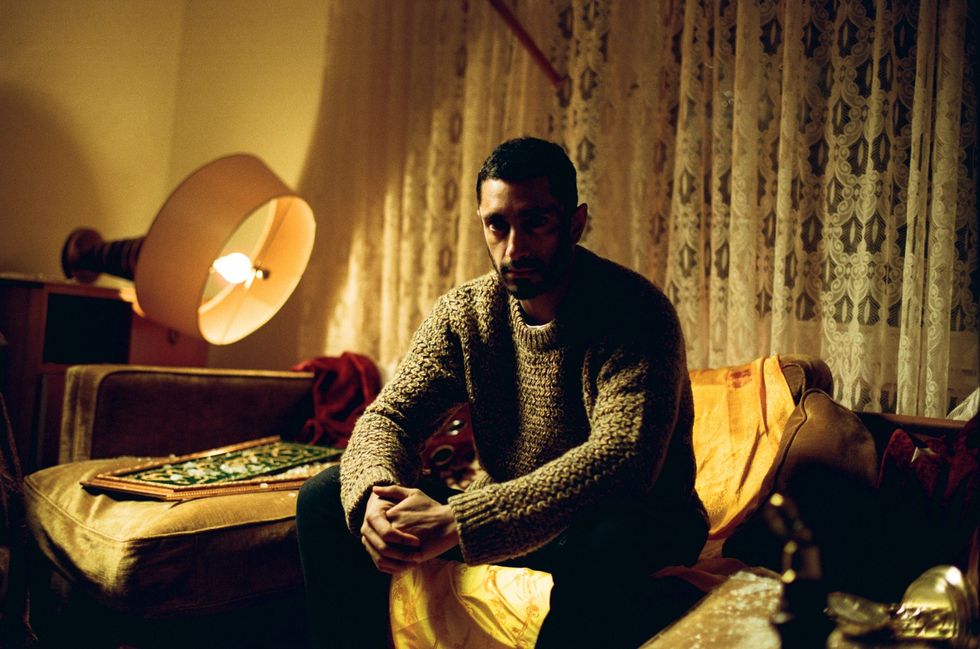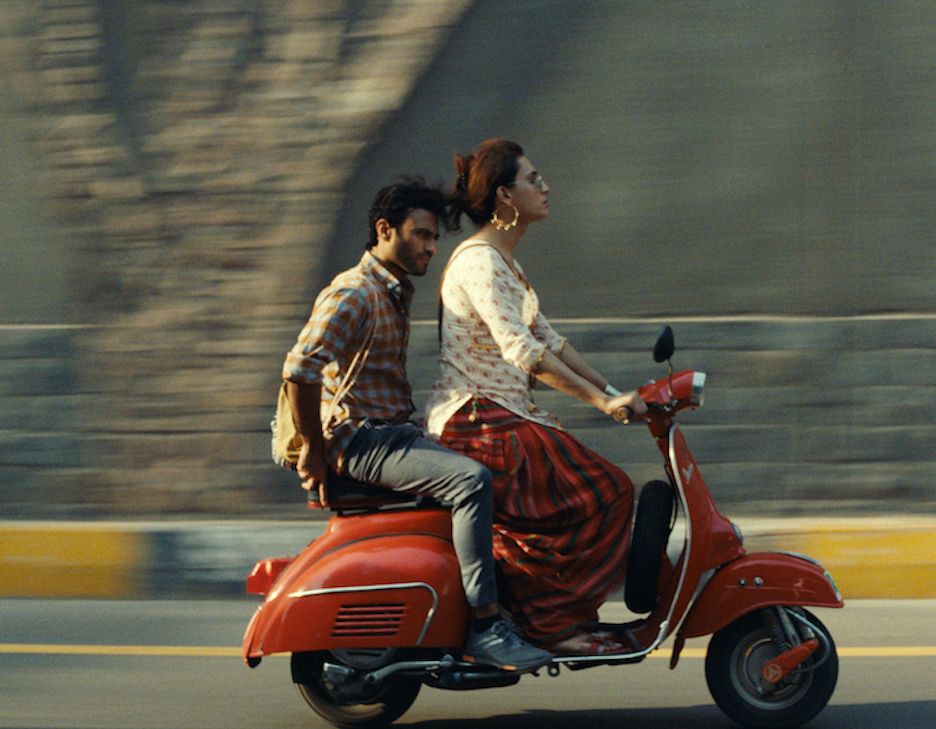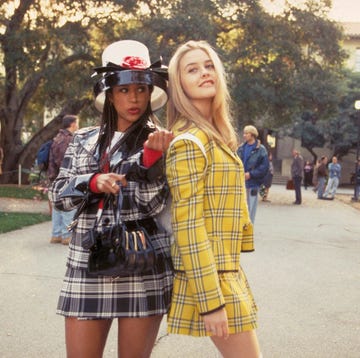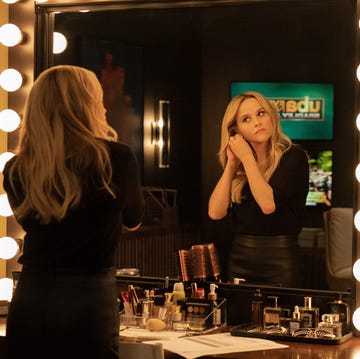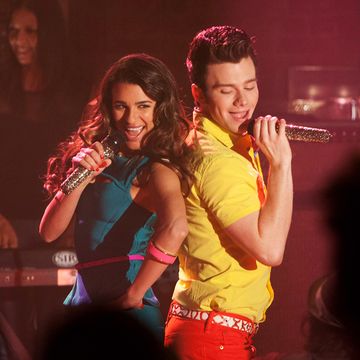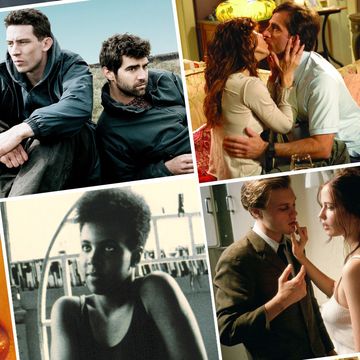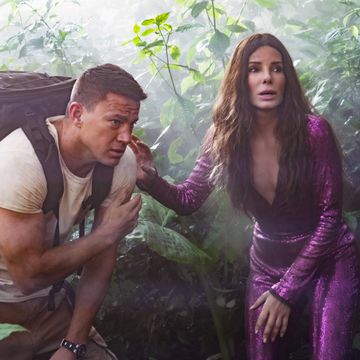When you are raised in a world without representation onscreen, you end up embodying those you do see in an effort to fit in. As an impressionable Indian-American teenager living in Illinois and desperately hoping to be “cool,” I wore green colored contacts, highlighted my thick black hair, bleached my face, threaded my eyebrows, donned a Dooney & Bourke bag, saved up for Ugg boots, and wore trendy clothes from Abercrombie & Fitch. Assimilation was the name of the game, and I was determined to win.
The persona I put forth was all a farce, of course, designed to conceal the fact that I was living a double life. On weekdays, I’d go from Model United Nations or volleyball practice to singing ragas while playing harmonium in an Indian classical music lesson or getting down in aramandi in bharata natyam, an ancient dance form from Tamil Nadu. On weekends, my family and I would be at the mandir for Hindu satsang, where I wore traditional kurta pajama, prayed, and chanted bhajans. And though I’d refuse to bring my mom’s delicious home-cooked food to school for lunch, opting for cheese-filled Bosco Sticks at the cafeteria instead, I’d eagerly scarf down roti, daal, bhindi, and chawal at the dinner table while watching Sa Re Ga Ma Pa, a talent competition, on Zee TV.
Truth be told, I secretly loved my Indian heritage—as a third-culture kid, it was the part of me that I most identified with. But I was afraid to be different, mainly since I felt like others feared the unfamiliar or what they did not yet understand. Beyond the identity crisis that goes hand in hand with being first-generation, I didn’t see, read, or hear stories about awkward, lanky brown girls like me. In fact, growing up, I didn’t see, read, or hear many empowering stories about women of color, period.
More From Harper's BAZAAR

This all began to change in the early 2000s, with the release of Gurinder Chadha’s Bend It Like Beckham. I vividly remember rushing off the school bus to pop in the DVD and watch 18-year-old Jesminder “Jess” Bhamra leave her sister’s wedding in a rani-pink sari to live her ultimate truth on the soccer pitch. She was able to have it all: her dream, her family, her best friend, and the man (her blue-eyed, gora coach). I believe I speak for most brown girls my age when I say this was a pivotal moment. Outside of international movies by the legendary filmmaker Mira Nair—and barring Bollywood’s overdone tragic, toxic, yet hopeful girl-meets-boy storylines—never before had my generation seen a strong brown woman defy traditions and expectations to have her main-character moment in Western cinema. Never before had I seen the cultural subtleties I grew up with precisely, poetically, and publicly broadcasted.
It was a fleeting glimpse into a bold new cinematic universe—one made with and for the South Asian diaspora. In the years that followed, films like the Oscar-winning Slumdog Millionaire (2008) gained popularity for their compelling plots, though the roles typically available for South Asians were cliché-ridden, with actors typecast as poverty-stricken nerds, brainy doctors, irritable shopkeepers, or bearded terrorists. And if you look closely, you’ll notice that these films were often developed under the thin guise of diversity and inclusion with a slew of white men at their helms.
Objectively problematic characters were also commonplace, like The Simpsons’ Apu Nahasapeemapetilon, who latched onto stereotypes and used hyper-exaggerated accounts of a South Asian accent to entertain the masses. This racist phenomenon has been coined patanking by Indian-American actress Sakina Jaffrey—the blending of thousands of dialects into one accent by overstressing certain syllables or exchanging vs and ws. Oftentimes, as in Apu’s case, these accents were performed by actors who were not themselves South Asian, contributing to the overall distortion of culture and whitewashing of marginalized communities throughout time.
A 2021 report by the University of Southern California’s Annenberg Inclusion Initiative confirmed such systemic underrepresentation by revealing that between 2017 and 2019, Asians and Pacific Islanders (API) made up merely 5.9 percent of all speaking characters across top-grossing films, with only a fraction of that fraction (17.4 percent) represented by South Asian actors. And of the behind-the-camera creators credited, only 2.9 percent were API, out of which the breakdown of South Asian talent remains unknown.
Today, there’s been an encouraging shift: Films written, produced, directed, and led by representatives of the South Asian diaspora and subcontinent are increasingly gaining mainstream recognition among global audiences. Within the past three years alone, movies like The Long Goodbye (2020), Definition Please (2020), Unmothered (2020), The Elephant Whisperers (2022), Wedding Season (2022), Joyland (2022), Land of Gold (2022), and Polite Society (2023) have achieved widespread fame. From comedies and documentaries to action-adventures and narrative dramas, these genre-spanning stories are taking Hollywood and beyond by storm. But why did it take almost 20 years for South Asian films to find commercial success?
“Bend It Like Beckham was a miracle. What didn’t happen after is a sustained effort,” offers Joseph Patel, the Oscar-winning producer of Summer of Soul, a 2021 documentary about the 1969 Harlem Cultural Festival, directed by Ahmir “Questlove” Thompson. “The only way things change is if everyone involved spends the extra time, energy, and effort to make small changes.” Patel built his career by championing underrepresented voices and has worked with the likes of Riz Ahmed, Anik Khan, Stormzy, and Jessie Reyez. He adds: “Any movie you make is a miracle. Any movie you get to watch at home and in theaters is a miracle. Everyone in the position to make a decision has to nurture that dream scenario that they want.”
Nardeep Khurmi, who wrote, directed, and plays the lead in Land of Gold—which follows a Punjabi truck driver’s journey with a young Mexican-American girl as he sets out to reunite her with her family (it recently debuted on Max, formerly HBO Max)—agrees. “When there’s lack of opportunity, there’s a scarcity mindset. So when you’re looking for representation, there’s a lot of pressure on those people and projects to represent everything they can,” he says. “I can’t imagine the pressure Mindy [Kaling] and Aziz [Ansari] were under. They didn’t get to create just to create.”
Though she infiltrated a new genre with her South Asian woman–led action-comedy Polite Society, starring Ritu Arya and Priya Kansara, writer and director Nida Manzoor faced a decade of pushback before getting her film picked up by Focus Features. “There’s even less representation in decision makers,” she says, referring to studio heads, producers, and the other powers that be in the entertainment industry. “Never in my career have I seen a South Asian executive give me feedback. It’s always, ‘We’ve got another South Asian film like yours; yours can’t exist.’ And that’s the real issue.” Khurmi underscores the need for top-down reform, which may be on the horizon with Netflix’s recent promotion of Bela Bajaria to chief content officer. “Institutional support is something that’s very important,” he says. “The next step is getting Netflix, Apple, and Warner Bros. to buy in.”
Still, Sujata Day—writer, director, and star of Netflix’s Definition Please, a comedy-drama about a former Scripps National Spelling Bee champion reckoning with her ailing mother and estranged brother—notes a microevolution. “When I first moved to Hollywood, I was auditioning for a lot of stereotypical roles; I was having to do an accent or wear a hijab even though I’m not Muslim. They put all brown people in a box,” says Day. “But as more people of color started creating and writing their own work, we saw a change. We had brown people writing brown characters and brown stories.”
Last year, Riz Ahmed became the first person of Asian descent to win an Oscar in the Best Live Action Short Film category. The Long Goodbye, which he co-wrote with director Aneil Karia, is a harrowing depiction of what it means to be brown, British, and Muslim in a post-Brexit world. As Ahmed sees it, there are three stages of representation.
“What you start off with is the stereotype—it’s two-dimensional and enforces some unhealthy narratives,” he says. “Then you move to the second stage of representation, where you flip the narrative. If we, as a minority group, are going to be talked about in politicized terms, we’re going to step into the arena, respond, and reimagine it. And finally you get to the third stage, where you’re just a guy or a girl doing your thing. You don’t feel self-defense—you just feel an unapologetic, expressive self-portrait. Characters that aren’t defined by cultural specificity, they’re fully human and three-dimensional. It’s been great to see us pushing into that zone now.”
Take, for example, the colorblind casting of Dev Patel in A24’s The Green Knight from 2021, derived from the famous 14th-century Arthurian folklore, or Himesh Patel as the struggling singer-songwriter Jack Malik in 2019’s Yesterday. Then there’s Kumail Nanjiani across Insecure’s Issa Rae in the 2020 romantic comedy and chaotic murder mystery The Lovebirds, while Never Have I Ever’s Maitreyi Ramakrishnan will star as Lizzie Bennet in The Netherfield Girls, a forthcoming adaptation of Jane Austen’s Pride and Prejudice.
Herein lies the true beauty of the South Asian diaspora: We are not a monolith. We’re brought up in unique ways across the world, within which we may find shared truths, but they are not mutually exclusive. “I want to see a million flowers bloom. People always think a rose is a rose,” Ahmed says. “There are so many different roses in Afghanistan, Pakistan, India … I want to see that. I want us all to be our own version of what we think a rose can be.” Indeed, stories about the immigrant experience or the American dream are crucial, but there is an inherent need to bring real texture and detail to the full spectrum of the human condition beyond race and religion. And the subcontinent is rich with stories from India, Pakistan, Bangladesh, Bhutan, the Maldives, Nepal, Sri Lanka, and Afghanistan—each deserving their own spotlight in history.
While more nuanced narratives are starting to be celebrated throughout the West, it’s important to note that the political climate of the region in which the film originates can also play a role in its eventual distribution and prominence. “What’s happening in India and Pakistan is so different from what’s happening in Hollywood; Hollywood is becoming more diverse and inclusive, it’s the complete opposite in South Asia,” says Pakistani writer and director Saim Sadiq. In 2022, his Urdu and Punjabi–language drama Joyland was briefly banned in his home country for depicting a transgender woman’s love affair, despite being the first production from Pakistan to compete and win in the official selection at the Cannes Film Festival.
This year, the Sundance Film Festival held its first dedicated South Asian lineup of film screenings and panels. Initiatives like South Asian Film Festival by Product of Culture are providing a platform for creatives to share their work with global audiences. And South Asian Excellence at the Oscars, a pre-party hosted by Priyanka Chopra Jonas and Anjula Acharia, celebrated industry change-makers. “It’s incredible to be in a space where you have actors, directors, producers, agents, and musicians who are all thriving and all South Asian,” says producer Patel. “That’s not anything I could have imagined when I was younger.”


